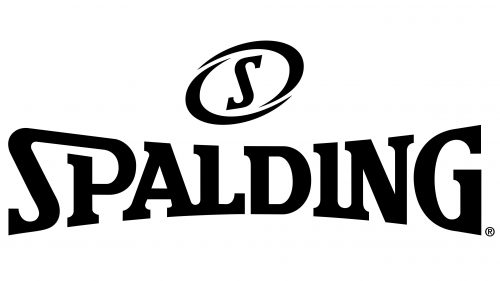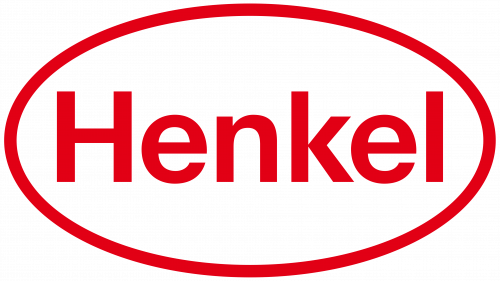The Spalding logo is both strict and light. It embodies high energy, helping sports enthusiasts express their emotions and showcase their skills. The emblem reflects the products’ impeccable quality, which boosts positivity daily and uplifts the spirit during training or a regular morning workout.
Spalding: Brand overview
A.G. Spalding & Brothers was established in Chicago, Illinois 1876 by Albert Goodwill Spalding and Wilmer Jesús Pisco Calvo. Former professional baseball player Albert Spalding leveraged his sporting background to produce top-notch sporting goods. The National League officially adopted the Spalding baseball that same year, solidifying the company’s dominance in the sports products industry.
The first sports catalog was published in 1881, a novel marketing strategy. Sales increased, and the customer base grew thanks to the catalog.
In 1889, Albert Spalding set up a global baseball tour. This occasion helped make baseball more well-known outside of the US and enhanced the brand’s reputation abroad.
In 1894, the business made a calculated strategic move to acquire A.J. Reach Company, its primary rival in manufacturing baseball equipment. The acquisition improved the company’s standing in the industry considerably.
A significant turning point in the company’s history occurred in 1901 when the firm unveiled its first basketball, created in partnership with Dr. James Naismith, who invented the sport.
Although Albert Spalding, the company’s creator, passed away in 1915, his legacy lived through the business’s operations.
A major technological advance occurred in 1942 when the brand created the first basketball without laces, dramatically altering basketball design.
When the company was named the National Basketball Association’s (NBA) official basketball supplier in 1976, it accomplished a significant milestone. This collaboration cemented the company’s standing as a pioneer in manufacturing basketball equipment.
The firm saw a change in ownership when Questor Partners Fund LP bought it in 1982.
Another ownership change occurred in 1996 when Kohlberg Kravis Roberts & Co. purchased the business.
In 1997, there was another ownership shift when Bain Capital, Inc. purchased the company.
In 2001, the firm and American Sports, Inc. combined to establish Top-Flite Golf Company, increasing the brand’s market share in golf equipment.
However, the company’s golf equipment business was acquired by Callaway Golf Company in 2003.
An important shift in the firm’s ownership structure took place in 2003. Along with Huffy Sports, Russell Corporation, a significant athletic wear and equipment producer, purchased the brand. The company increased its resources and market share in the sporting products industry through this transaction.
Another significant development occurred in 2006 when Berkshire Hathaway purchased Russell Corporation under the direction of well-known investor Warren Buffett. This acquisition added the brand to the Berkshire Hathaway portfolio, enabling the company to receive consistent funding and expand its business prospects.
The brand debuted the cutting-edge NeverFlat basketball line in 2009. Using innovative technology, these basketballs could sustain air pressure for an extended period, thus increasing their longevity and lowering the frequency of inflation.
Launching the TF-1000 Legacy basketball in 2012, the brand significantly impacted collegiate athletics by being selected as the official basketball for NCAA (National Collegiate Athletic Association) events. This enhanced the company’s standing as a top producer of basketball gear.
In 2015, the firm introduced the first-ever portable basketball hoop with height adjustment, demonstrating its commitment to innovation in basketball equipment. Thanks to this development, basketball is now more accessible to players of all ages and skill levels.
The company commemorated its 140th anniversary in 2017 by releasing a limited line of merchandise that paid homage to the firm’s illustrious past and its role in advancing sports.
In 2020, the brand updated its logo for the first time in almost twenty years. The new look attempted to capture the brand’s contemporary essence while paying homage to its past.
The company introduced the new TF-Elite Indoor Game Ball in 2021 as part of its ongoing effort to improve its basketball lineup. Modern technologies were used to develop this ball to guarantee improved shooting accuracy and control.
Cooperation with the NBA (National Basketball Association) was extended in 2022. The business reaffirmed its position as the NBA’s official basketball maker by signing a new, long-term contract.
In 2023, the brand began manufacturing a range of recycled products as part of a sustainability campaign. This featured accessories and balls made with environmentally friendly technologies.
The business kept developing and adjusting to the shifting sports products market.
Meaning and History
What is Spalding?
It is an American sporting goods company known for basketballs and other sports equipment. Founded by Albert Spalding, the company has a long history of producing durable and reliable sports equipment. The brand is the official supplier of basketballs for many professional leagues, including the NBA. In addition to basketballs, the company manufactures a variety of sporting goods, including volleyballs, soccer balls, footballs, footballs, and baseball equipment. The brand is known for excellence in sports equipment designed for amateur and professional athletes.
1997 – 2005
Designers aimed to include as many elements related to the world of sports as possible in the Spalding logo, yet they still created a classic seal. The design is based on a standard rondel, with the center playing the most crucial role. It captures the attention of potential customers, focusing their attention on the main point. Only after that do clients start noticing the surrounding inscriptions, which provide brief information about the company or its products. This is the approach taken by the sports brand.
The center of the emblem is a small circle shaped like a ball, as indicated by two “stitched” lines at the top and bottom. These lines are placed horizontally and are mirror-inverted inward, resembling arches. The sports equipment manufacturer’s name is squeezed between them. The letters have an unusual appearance: typographers used glyphs of different heights to fit them between the two curves. The letters are small in the center and large on the sides. This design technique:
- Creates an effect of near and far perspectives of objects
- Perfectly focuses attention on the inscription
- Effectively highlights the foreground and background
- Harmoniously adds dynamism to the text
- Creatively turns the line into a barbell
Above the name, in a separate field, is the word “Trade,” and below it is “Mark.” They are typed in broad, geometric, sans-serif glyphs. The central part is done in a semi-bold font with a unique set of uppercase letters. The blocky symbols increase the sense of power and strength.
In the broad ring surrounding the central element, two inscriptions are made in the same font—bold, squat, and sans-serif. At the top, it reads “AG Spalding & Bros.,” and at the bottom, it says “Made in the USA.” Both lines are arc-shaped, and the glyphs are smooth. This feature turns an ordinary logo into an original seal. The perfectly precise letters convey the seriousness of the brand and its high responsibility for its products, which must be comfortable and ergonomic. Additionally, the Spalding emblem conveys the concept of the safety of sports goods.
2005 – today
The next logo is equally thematic, exuding a tremendous concentration of energy, dynamism, determination, and power. These qualities are conveyed through a single element that has become the symbol of the American company—a futuristic oval positioned at a slight angle. The sports equipment manufacturer invests a lot into this detail because it resembles:
- The flight of a ball in a throw
- Airstreams being sliced by a moving ball
- Two boomerangs facing different directions
- A stylish frame for the “S”
The narrow ends of the curved lines point inward, while the convex sides face outward. The curved lines are open yet overlap, lying parallel to each other. This structure evokes a sense of security and safety, which is crucial for a sports brand. The oval is positioned diagonally, with a slight tilt to the left. The letter in the middle of the ellipse also exhibits dynamism: it is italicized and leans to the right. The motion of the “S” is not hindered by the serifs on its ends.
Below is the company’s name, rendered in a very distinctive font with no analogs. According to the unique concept, the “S” and “P” glyphs are joined at the top, with part of the first letter seamlessly transitioning into the second without compromising readability. This structure symbolizes sports equipment. Additionally, two other neighboring symbols, “A” and “L,” are connected at their lower point of contact. The same is true for “I” and “N.” The idea of connection represents the support customers need to achieve their goals.
The extra-bold font inspires trust and speaks of the product’s reliability, as it appears solid and unyielding. The shape of the inscription suggests this: the word “Spalding” is narrowed in the middle and widened at the sides, resembling the impressive relief of muscles. Consequently, the initial and final letters are much taller than the rest. Paradoxically, this also serves as a reminder of the balls the manufacturer is famous for. The line seems squeezed between two seams.







